Abstract
Pain can be influenced by both pharmacologic and psychologic factors. The purpose of this study was to investigate the pharmacologic and psychologic factors. The purpose of this study was to investigate the pharmacologic and psychologic processes that may play a role when topical anesthesia is used to reduce the pain of dental injections. Subjects were assigned to one of two belief manipulation conditions: one-half of the subjects were led to believe they would receive a placebo, while the remaining subjects were told they would receive the active agent. In reality, all subjects received two separate injections at contralateral sites, one preceded by a placebo and the other by a 20% benzocaine gel. The order in which injections were given was associated with differences in pain report. Second injections were more painful than first injections. Whether injections were preceded by an active or placebo agent did not alter subjects' experienced pain. Likewise, the belief manipulation did not affect the pain report. However, subjects who believed they would receive the active agent anticipated significantly less pain than subjects who thought they would receive placebo. The widespread belief that topical anesthetics are effective at reducing injection pain may serve to reduce the anticipatory anxiety associated with an impending dental injection, thus making the injection experience less aversive.
Full text
PDF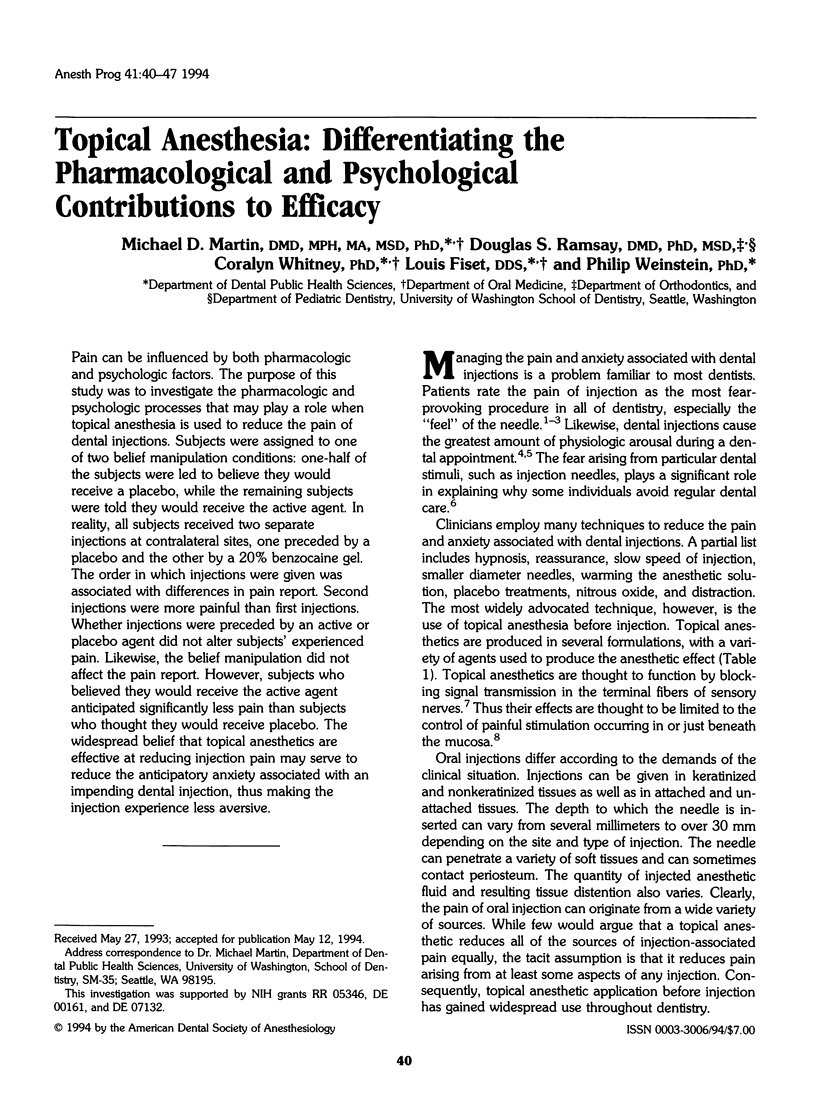
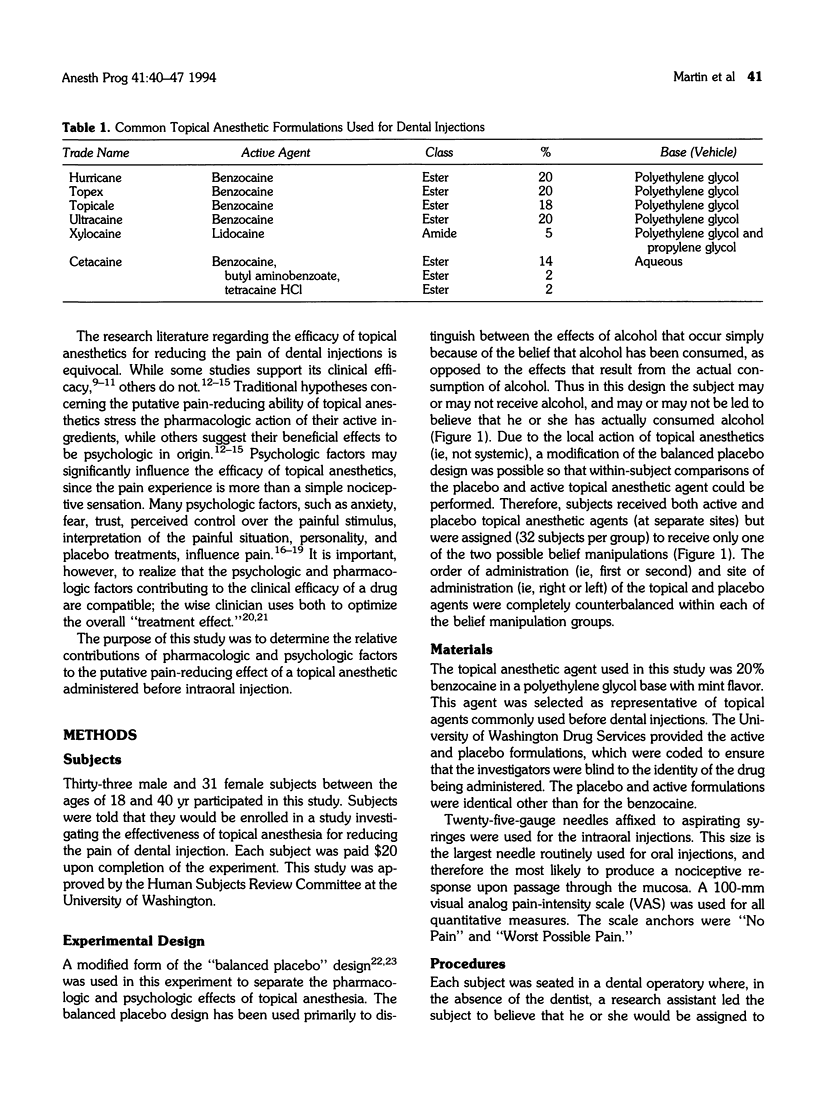
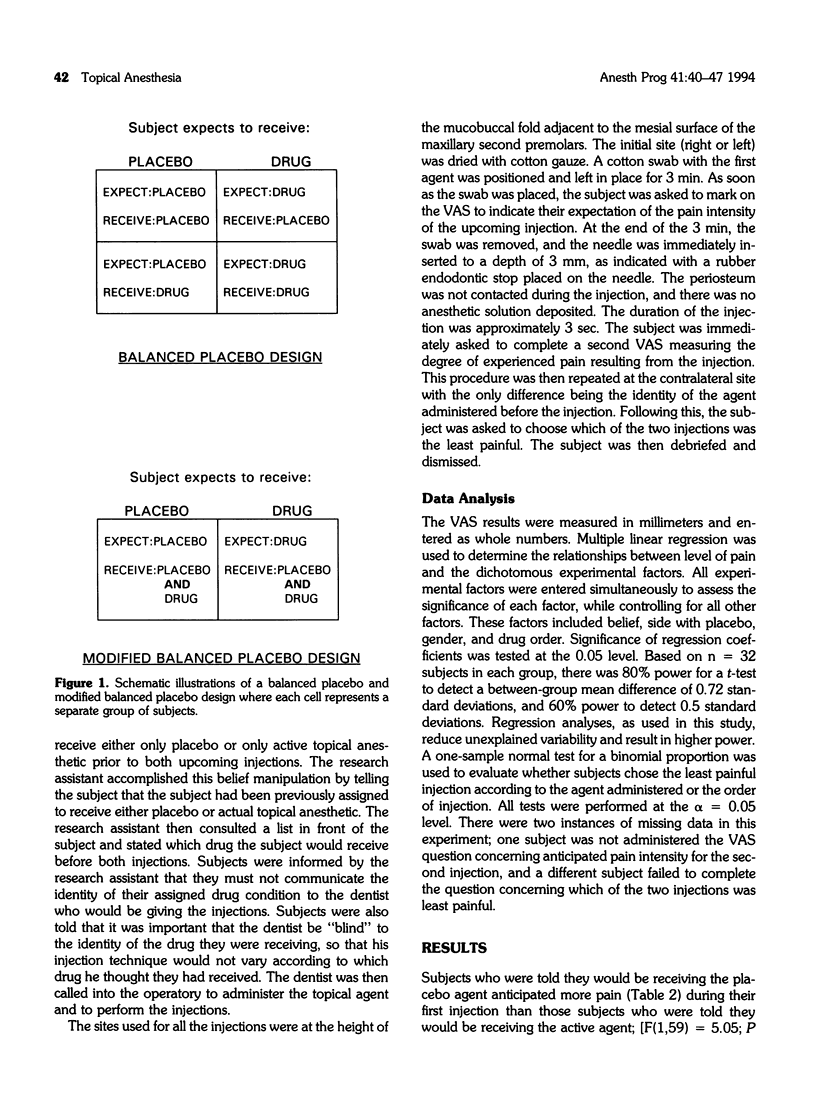
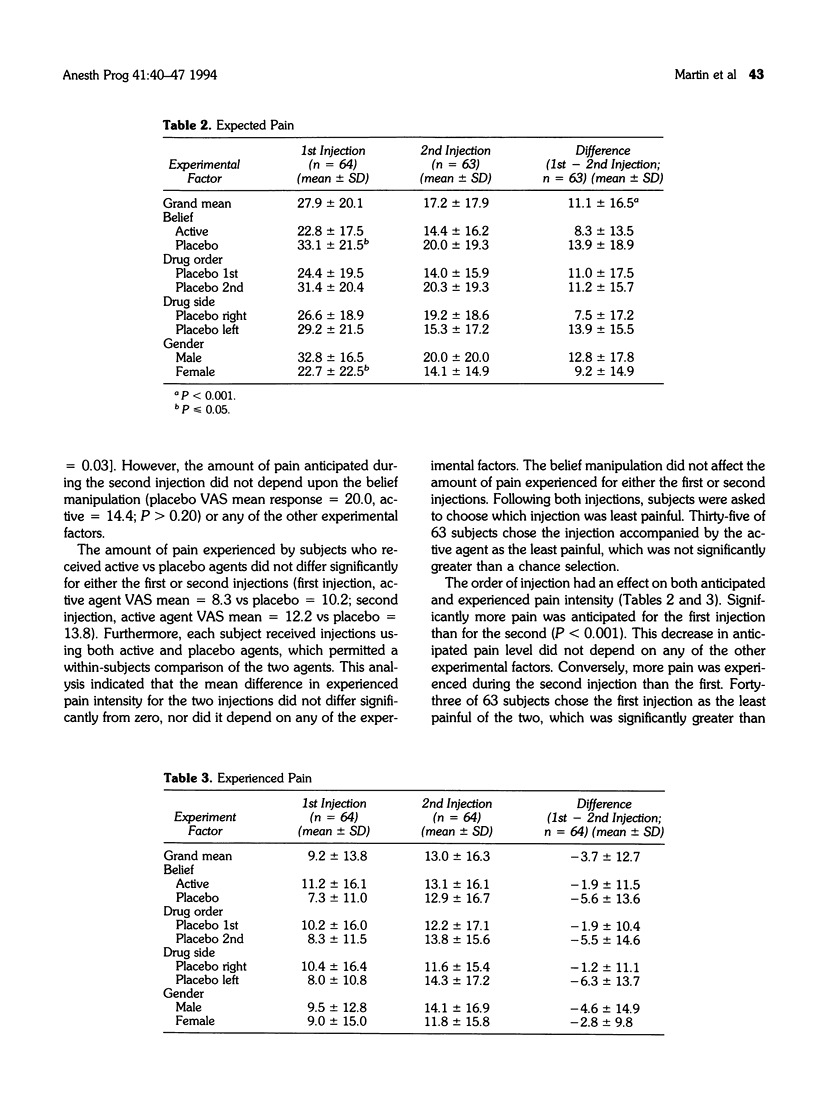
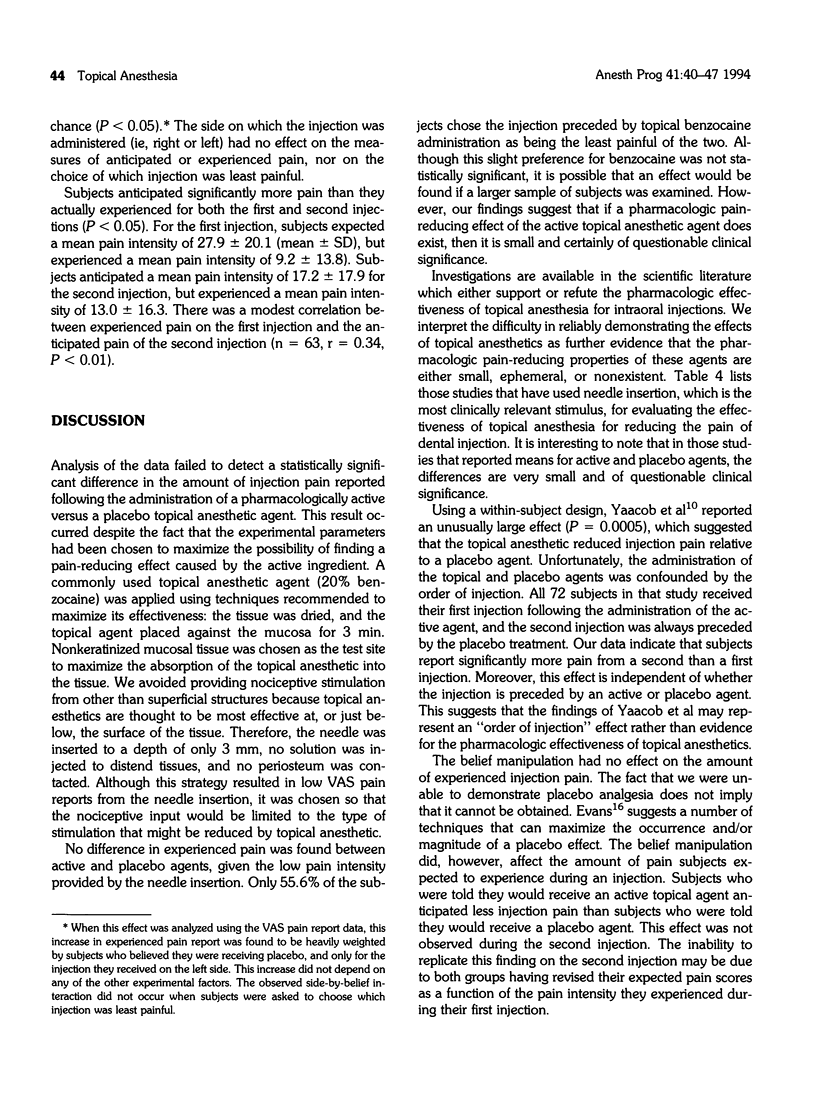
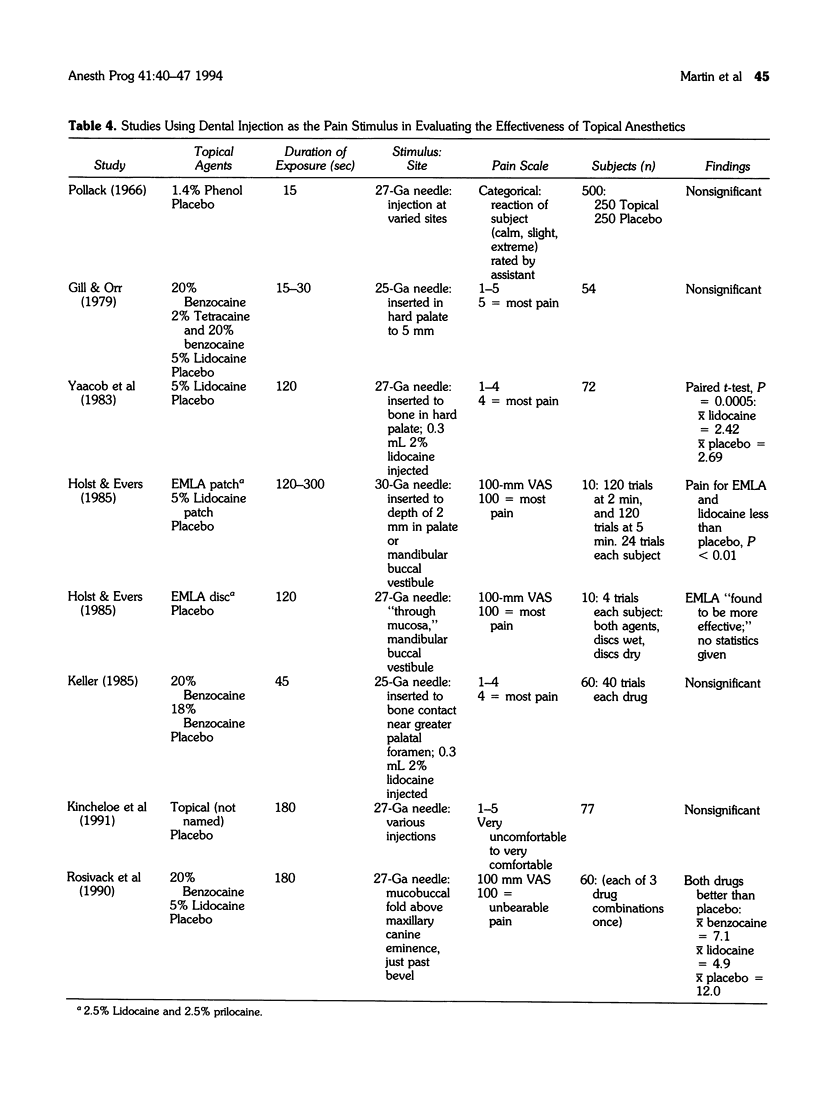

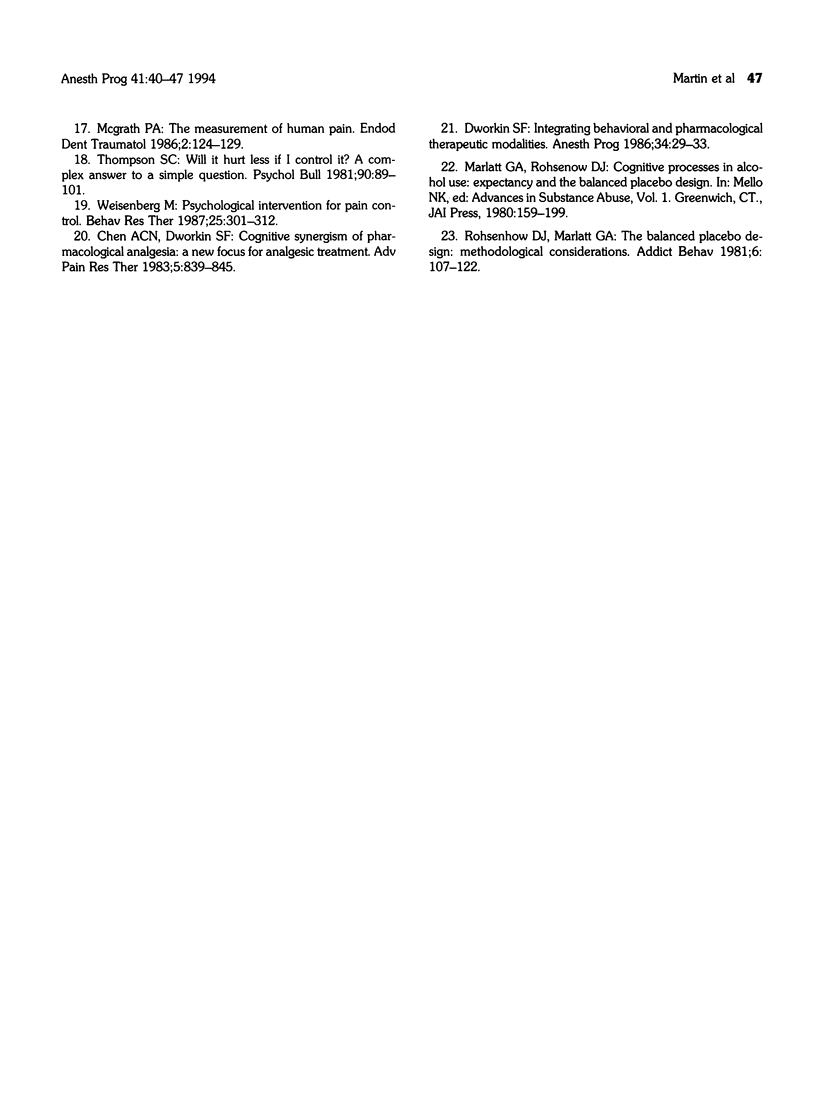
Selected References
These references are in PubMed. This may not be the complete list of references from this article.
- Adriani J., Beuttler W. A., Brihmadesam L., Naraghi M. Topical anesthetics: use and misuse. South Med J. 1985 Oct;78(10):1224–1229. doi: 10.1097/00007611-198510000-00020. [DOI] [PubMed] [Google Scholar]
- Bernstein D. A., Kleinknecht R. A., Alexander L. D. Antecedents of dental fear. J Public Health Dent. 1979 Spring;39(2):113–124. doi: 10.1111/j.1752-7325.1979.tb02932.x. [DOI] [PubMed] [Google Scholar]
- Dworkin S. F. Integrating behavioral and pharmacological therapeutic modalities. Anesth Prog. 1986 Jan-Feb;33(1):29–33. [PMC free article] [PubMed] [Google Scholar]
- Gale E. N. Fears of the dental situation. J Dent Res. 1972 Jul-Aug;51(4):964–966. doi: 10.1177/00220345720510044001. [DOI] [PubMed] [Google Scholar]
- Gill C. J., Orr D. L., 2nd A double-blind crossover comparison of topical anesthetics. J Am Dent Assoc. 1979 Feb;98(2):213–214. doi: 10.14219/jada.archive.1979.0476. [DOI] [PubMed] [Google Scholar]
- Holst A., Evers H. Experimental studies of new topical anaesthetics on the oral mucosa. Swed Dent J. 1985;9(5):185–191. [PubMed] [Google Scholar]
- Keller B. J. Comparison of the effectiveness of two topical anesthetics and a placebo in reducing injection pain. Hawaii Dent J. 1985 Dec;16(12):10–11. [PubMed] [Google Scholar]
- Kincheloe J. E., Mealiea W. L., Jr, Mattison G. D., Seib K. Psychophysical measurement on pain perception after administration of a topical anesthetic. Quintessence Int. 1991 Apr;22(4):311–315. [PubMed] [Google Scholar]
- Kleinknecht R. A., Klepac R. K., Alexander L. D. Origins and characteristics of fear of dentistry. J Am Dent Assoc. 1973 Apr;86(4):842–848. doi: 10.14219/jada.archive.1973.0165. [DOI] [PubMed] [Google Scholar]
- McGrath P. A. The measurement of human pain. Endod Dent Traumatol. 1986 Aug;2(4):124–129. doi: 10.1111/j.1600-9657.1986.tb00598.x. [DOI] [PubMed] [Google Scholar]
- Pollack S. Pain control by suggestion. J Oral Med. 1966 Apr;21(2):89–95. [PubMed] [Google Scholar]
- Rohsenow D. J., Marlatt G. A. The balanced placebo design: methodological considerations. Addict Behav. 1981;6(2):107–122. doi: 10.1016/0306-4603(81)90003-4. [DOI] [PubMed] [Google Scholar]
- Rosivack R. G., Koenigsberg S. R., Maxwell K. C. An analysis of the effectiveness of two topical anesthetics. Anesth Prog. 1990 Nov-Dec;37(6):290–292. [PMC free article] [PubMed] [Google Scholar]
- Thompson S. C. Will it hurt less if i can control it? A complex answer to a simple question. Psychol Bull. 1981 Jul;90(1):89–101. [PubMed] [Google Scholar]
- Weisenberg M. Psychological intervention for the control of pain. Behav Res Ther. 1987;25(4):301–312. doi: 10.1016/0005-7967(87)90008-8. [DOI] [PubMed] [Google Scholar]
- Yaacob H. B., Nor G. M., Malek S. N., Bin Mahfuz M. A. The efficacy of xylocaine topical anaesthetic in reducing injection pain. Med J Malaysia. 1983 Mar;38(1):59–61. [PubMed] [Google Scholar]


